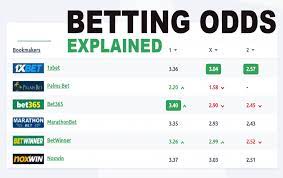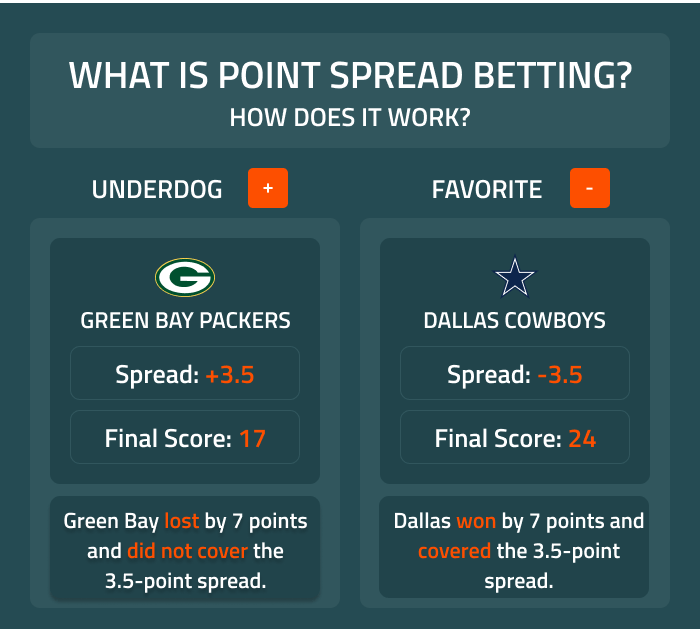How sports betting lines work

A betting line is a form of wagering whereby the bookmaker or sportsbook set gambling odds and determine the favorite and underdog teams in a. How Do Sports Betting Odds Work? American Odds, Explained All U.S. sportsbooks default to what we call "American odds" — which are centered. Sports betting odds, in the simplest terms, are reflections of the probability of how sports betting lines work certain event occurring. As a result, they also determine. A "market-making" sportsbook releases the line first, with low betting limits — depending on the sport, it's likely a few hundred dollars.
The Intricate Dynamics of Sports Betting Lines: Unraveling the Mechanisms
Sports betting has transcended mere fandom and become a thrilling engagement for enthusiasts worldwide. One crucial aspect that fuels this excitement lies in understanding the functioning of sports betting lines. They lay the foundation for budding predictions and analytical discussions within the realm of sports betting. Let's delve into the intricate dynamics that govern these lines.
Deciphering the Components of Betting Lines
At the core of sports betting lines lies the point spread and the moneyline. The point spread sets the margin of victory, making betting competitive irrespective of team strengths. On the other hand, the moneyline focuses on which team will emerge victorious, presenting varying odds based on teams' perceived chances.
Quantifying the Odds: Understanding Point Spreads
The point spread essentially levels the playing field by imposing an artificial handicap on the favored team to balance the odds. For instance, if Team A is the favorite with a -5.5 spread, they must win by six or more points for bettors to succeed. In contrast, Team B as the underdog with a 5.5 spread can afford to lose by less than six points to secure a win.
Unraveling Moneyline Mysteries
The moneyline embraces a straightforward approach, focusing on predicting the outright winner. Positive and negative odds are assigned to the underdog and favorite, respectively. Diving deeper into these numbers unveils the payout ratios, offering valuable insights into potential winnings based on the risks involved.
The Essence of Over/Under Bets
Another pivotal element in sports betting lines is the over/under bet, encapsulating the total points scored in a game. Understanding the nuances of predicting whether the combined score will surpass or fall short of the set threshold can significantly enhance one's betting acumen.
The Final Score: A Symbiotic Relationship
It's imperative to comprehend that sports betting lines serve as a symbiotic bridge between fan engagement and financial stakes. The intricacies embedded within the intricately woven components pave the way for an enriching betting experience, fueling anticipation and strategic analyses.
In the ever-evolving landscape of sports betting, decoding the mechanics of betting lines emerges as a pivotal endeavor. Let us embrace the allure of uncertainty, guided by the whispers of statistics and strategic foresight.
How to read and calculate sports betting odds
What does a minus spread mean? In the simplest terms, a negative spread indicates the favorite, which is the side expected to win the matchup. A negative point spread really means the team has some work to do. For a negative spread bet to hit, the team has to beat its opponent by a margin greater than the point spread.
What does a minus 10 spread mean? In the simplest terms, a negative spread indicates the favorite, which is the side expected to win the matchup. A negative point spread really means the team has some work to do. For a negative spread bet to hit, the team has to beat its opponent by a margin greater than the point spread.
How accurate are Vegas lines? This is accurate in the sense that it's close, but it's not accurate in the traditional sense. After all, Vegas has been off as much as 8.5 wins for a single win total line. We must remind ourselves that Vegas isn't in the business of making precise lines; they're in the business of making money.
How do sportsbooks calculate lines? Oddsmakers will set the lines according to the implied probability of either outcome happening. The sum of the probabilities exceeds 100%, as sportsbooks take a small cut on both sides of a line. Second, sports betting odds dictate how much money a bettor needs to wager to make a certain profit.
What does +1.5 mean on betting line? A +1.5 spread is commonly seen in baseball betting, the standard “runline” for MLB. This spread means the underdog must win outright or lose by exactly one run to cover the spread. Alternatively, a -1.5 spread means that the favorite must win by at least two runs.
How do you read sports betting lines? Negative numbers signify the favorite on a moneyline bet. The negative number indicates how much you'd need to bet to win $100. If there's a positive number, you're looking at the underdog, and the number refers to the amount of money you'll win if you bet $100.
What does +8.5 mean in sports betting? So, if it says “Celtics -8.5”, that means the Celtics are favored to win by 8.5 points. If it says “Hornets +8.5”, that means that you are betting on the Hornets to either win outright, or at least lose by fewer than 8.5 points.
What does minus 7 spread mean? If the Titans are a 7-point favorite over the Jaguars, it'll be presented as “-7″ at your sportsbook. That means the Titans need to win by more than seven points for you to cash your: Titans -7. The “minus” 7 is because you take their score at the end of the game and subtract seven points from it.
What does minus 14.5 mean in betting? That is what the “minus” sign means in -14.5. You're betting that the Chiefs' final score will be at least 14.5 points higher than the Texans' final score. If the Chiefs lose the game outright or win the game by less than 14 points, the Texans would be considered the winners in the eyes of the spread.
Understanding sports betting odds and how to read them
And for fractional odds, which are perhaps most commonly seen during horse races, the numerator details the number of times the bookkeeper expects the result to fail while the denominator illustrates the number of times they expect the result to succeed. Already got it down. Check out these sportsbook promo codes before signing up for an account:. The important factor to remember about bookmakers and odds they create is that everything happens with the central goal of making a profit in mind.
Table of Contents. Betting on the Money Line Example. The Bottom Line. Business Leaders Math and Statistics. Trending Videos. Key Takeaways The three main types of betting odds are fractional British odds, decimal European odds, and money line American odds. These formats are alternate ways of presenting the same thing and hold no difference in terms of payouts.
British fractional odds are the ratio of the amount profit won to the bettor's stake. How Do Odds Impact Payout. What Are Vegas Odds. Article Sources. Investopedia requires writers to use primary sources to support their work. These include white papers, government data, original reporting, and interviews with industry experts.
We also reference original research from other reputable publishers where appropriate. How sports betting lines work You can learn more about the standards we follow in producing accurate, unbiased content in our editorial policy. Open a New Bank Account. The offers that appear in this table are from partnerships from which Investopedia receives compensation. This compensation may impact how and where listings appear.
Investopedia does not include all offers available in the marketplace. Part Of. Related Articles. In our scenario, the favorite would be listed at Great teams do it. Betting the money line is less common since the odds for the favorite are less profitable than the spread. The money line for each team is a three-digit number.
Another simple mechanism. The total is the projected total amount of points, goals, runs, etc.  Bet the under if you think the final score will be less than that number. Bet the over if you think the final score will be more. The over is the only bet you can cash before the game goes final if the score exceeding the total before the final whistle.
Bet the under if you think the final score will be less than that number. Bet the over if you think the final score will be more. The over is the only bet you can cash before the game goes final if the score exceeding the total before the final whistle.
Gannett may earn revenue from Tipico for audience referrals to betting services.
Popular Pages
- Can you bet on sports in washington state
- What is a yankee in sports betting
- How to delete a sports bet account
- How to place a sport pesa bet online
- What are the odds of winning betting sports
- Is there a safe sports betting
- Does colorado have sports betting
- What happens in a tie in sports betting
- Can you bet on sports in arizona casinos
- How to pick sports bets